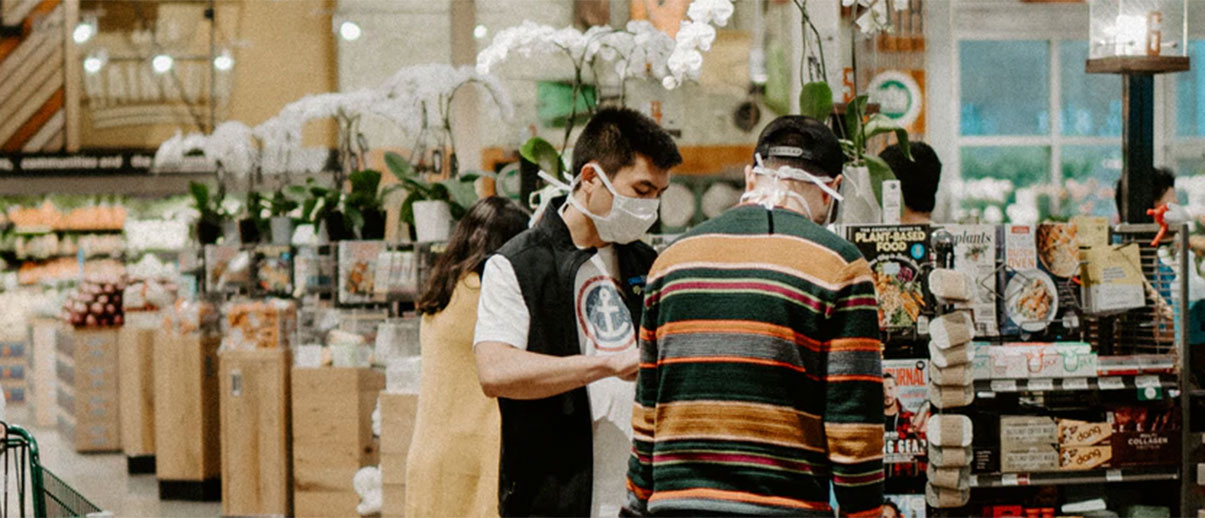Recent Articles
The changing experience of grocery during COVID-19
By Richard Band and Julia Goldhammer
As we enter the 6th month of living under Covid restrictions, Egg Strategy has been looking at the world of grocery shopping and how it has changed over the duration of the pandemic.
Since early April, we have been tracking behavior both qualitatively and quantitatively among CPG shoppers. While we have seen classic comfort foods like alcohol, ice cream, soda and salty snacks spike in sales, we have been more interested in seeing how the grocery experience has shifted over time. What are people looking for now in-store as Covid has become a marathon vs. a sprint?
COVID is making us all planners
For many of us, minimizing exposure to the virus means eating at home more often while making fewer trips to the grocery store—requiring more of each shopping trip. Arriving at the store we’re trying to balance preparation for the week(s) ahead and a desire for efficacy. So, it’s not surprising that we’re seeing an increase in the need to plan for grocery trips. At its simplest, this means that pre-shopping behavior (recipe inspiration, list making) is a much greater part of the grocery experience now. We also see this manifest in out of category indicators like a increases in cookbook sales, and surging interest in online cooking tutorials, recipe websites and food blogs.
How might brands help shoppers with this heavy lifting, both in terms of the planning and shopping itself?
Mission Vs. Browsing
As we become a nation of grocery planners, our desire for leisurely in-store browsing has dropped dramatically. Grocery shopping has become more mission based with the primary goal of getting the list complete and the job done as fast and efficiently as possible. Well-stocked stores that have gone beyond what’s required to take meaningful concrete steps to ensure a safe shopping experience with clear wayfinding, cleaning protocols and social distancing markers have emerged as successes. Unsurprisingly it is the grocery stores that have historically emphasized experience that have delivered most successfully here. Even as grocery shopping becomes more “functional”, we are seeing experiential stores like Trader Joe’s, Whole Foods and Costco provide the safest experience for shoppers, and shoppers have noticed.
What’s the next iteration in a premium shopping experience and how might brands be at the forefront of this?
Tension between comfort and experimentation
Early stage Covid experiences (March-May) suggested that many food choices were driven much more by a desire for comfort and nostalgia. Comfort food sales (because we deserve it) increased as people cocooned at home and baked bread like crazy. The lack of spontaneous browsing time at shelf, meant that we weren’t seeing as much consumer willingness to try new things or experiment. However, as Covid has lengthened through the summer, consumer desire for more adventurous cooking, and to break up the routine has increased. We’ve seen this most frequently in a return to take out and delivery as a break from home cooking, but anticipate that “comfort baking” will transform into more adventurous home cooking as people turn their new found confidence in the kitchen into a desire for more challenging recipes and more fun.
How might stores design an experience that allows shoppers to discover new food/recipe options without distracting them from the mission of getting their groceries done quickly? How can stores and brands bring back some fun and adventure in a safe way?
The return of multi-channel shopping
The early phases of Covid saw a significant rise in the one-stop shop as consumers sought to minimize exposure to others and visit large stores which would provide the biggest range of items to purchase. Since lockdown restrictions have eased, we’re seeing some key changes emerge. The main one is a return to smaller (still mission-based) trips to C-Stores which offer “safe impulse” shopping to shake up the usual grocery experience and pick up craveable or out of stock items without the time spent inside a larger grocery store.
How might brands seize the opportunity to capture shoppers’ attention in an additional venue with novel varieties or packagings?
